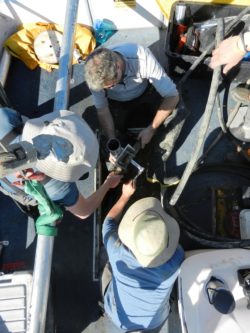Studying a river’s history to secure its future


With a three-year, $600,000 grant from the National Science Foundation, he’s studying changes unfolding along the banks of the Mississippi River. Rivers, he notes, are critical to coastal sustainability because they carry water, sediment, and pollutants to the sea. Shifts in ocean temperatures and circulation, such as El Nino in the Pacific, also form major weather systems that increase the number and power of floods and droughts.
By collecting sediment samples to extend historical records, Munoz is assembling a picture of how the lower Mississippi River basin has changed over the last millennium—and what those changes mean for the future of the river and the coastal regions it feeds. He’s also looking at how weather patterns that are controlled by the ocean influence precipitation and flood risks along the river.
He’s discovered that walls and other manmade features built to hold back floods may actually be exacerbating flooding. “The U.S. Army Corps of Engineers has invested billions of dollars to mitigate flooding on the Mississippi by fixing the river in place with concrete retaining walls and earthen levees,” he says. “One hidden cost of this engineering is that it can magnify flood hazards by turning a moderate flood into a big one.”
Munoz says another hidden cost of solutions like walls and levees is that they reduce the delivery of sediment to the delta and the coast. This diminishes land mass along the coast and leaves New Orleans and other urban areas more vulnerable to flooding.
Munoz’s work will help policymakers make smarter decisions to protect rivers, coasts, and low-lying communities against climate change and major weather events. “We need to find new ways to work with nature—rather than working against it—to mitigate coastal hazards.”
Contact faculty researcher Samuel Munoz.
Author: CSI Staff